Reading Time: 7 Min
You have finally gone through a nose job. Barring the swelling, the primary results seem to be just as you wanted to be. Now, you can finally show off your new nose to the whole world, or can you?
The doctor says you will have to cover your nose with those white tapes for a while (nope, the skin-toned ones won’t make it look any cooler!). So, your mind starts asking questions:
- Does taping after rhinoplasty hold any true benefit?
- How should you tape your nose?
- How often should you wear tapes and for how long?
- What happens if you don’t tape your nose after rhinoplasty?
- What kind of tape to use after rhinoplasty?
Don’t fret! We have asked all these questions from our rhinoplasty specialists. Here is what they think you should know about this familiar but controversial part of recovery after rhinoplasty.
Is taping after rhinoplasty necessary?
After nose job surgery, it is hard not to stand out with bandage-like tapes right in the middle of your face. So, you might be wondering if you can just skip taping altogether.
Truth be told, even doctors aren’t in agreement about whether nose tapes after rhinoplasty are necessary.
Most nose job surgeons believe it is an indisputable aspect of post-op care. While for others, it is only a matter of the patient’s nose type and the thickness of the skin. So, this is really up to your surgeon to decide if you need it or not as it depends on the characteristics of your nose and your surgeon’s preference.
What you should do is to follow your doctor’s instructions even if it means applying/reapplying nasal tapes for some weeks after the surgery.
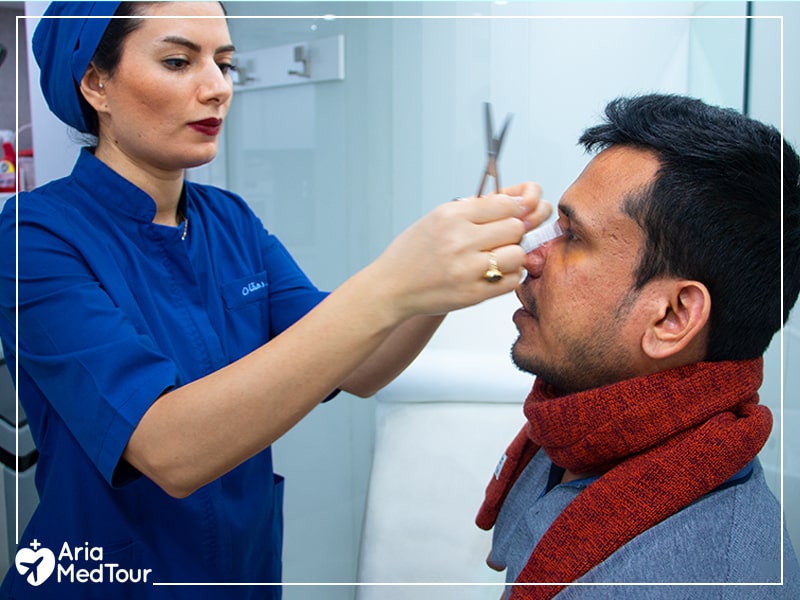
Our patients usually learn how to apply nasal tapes during their follow-up visit after the surgery
Why should I tape my nose?
Surgeons who encourage taping after rhinoplasty, often do so because they believe it can help the swollen skin to quickly wrap down on the underlying bone.
Furthermore, one study suggests that wearing tapes after rhinoplasty can act as a psychological “bridge” for you to gradually adjust to your new look.
Here is what our board-certified plastic surgeons think about the reason for taping after rhinoplasty:
- “After a nose job, your nose is extremely prone to swelling and inflammation. Nose tapes after rhinoplasty help subside the swelling.” Says Dr. Bassam.
- “Tapes help maintain a satisfactory result. What’s more, they can send the signal to everybody else that your nose is vulnerable and they should treat you more delicately.” Says Dr. Yahyavi.
- “I don’t usually insist on wearing tapes for more than a week. In my opinion, taping can merely help subside the swelling. The thicker the patient’s skin is, the more it is likely to swell and need tapes.” Says Dr. Amin Amali.
How should I tape my nose?
As with their surgical techniques, different doctors have different taping approaches. Your nose type and thickness of the skin can also determine how you should tape your nose after rhinoplasty.
Nevertheless, the basics of taping after nose job are quite similar. Before getting into it, you need to thoroughly clean the area with soap and water.
Step 1) Tape your nasal bridge
Your surgeon might start from your nasal tip. Again, it depends on his/her preference and your nose type.
To tape the bridge of your nose, take 3 to 5 pieces of tape (about 2 inches each). We recommend applying the first stripe on the supra tip edema and continuing going up the nose.
Each stripe should partially overlap the previous one. It is also important to slightly squeeze the area evenly as you apply the tape.
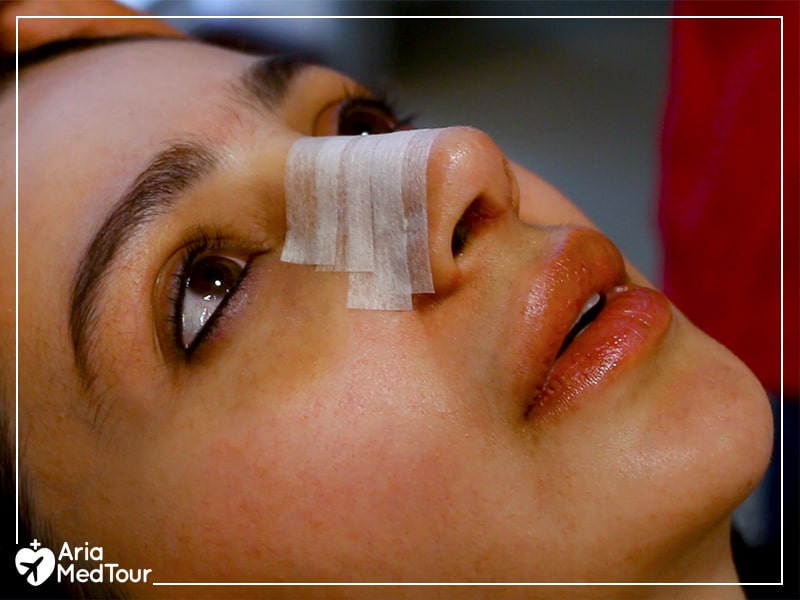
Each strip should partially overlap the previous one. It is also important to slightly squeeze the area evenly as you apply the tape.
Tip: As you work your way up, take shorter pieces of tape so that the final result looks more organized.
Step 2) Wrap the tip with a “U”
Now, take a longer piece of tape. Wrap around the underneath of the tip while pulling the tip slightly up by creating a “U” shape.
Try not to cover the nostrils while doing this. You should leave the upper part of your nasal tip uncovered. Based on the type of surgery, you may or may not be required to pinch the tip area.
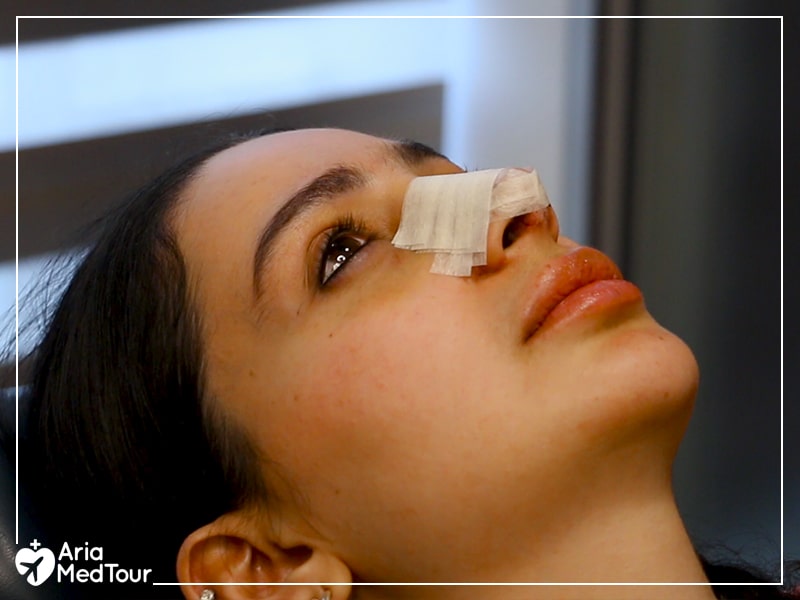
You should leave the upper part of your nasal tip uncovered.
Step 3) Repeat
At this point, you will have to repeat the first step (repeating the 2nd step is rarely required.). Mild pressure should be added while repeating the process.
How to remove nasal tapes?
2 to 3 weeks into your rhinoplasty, you should change the tapes every 2 to 3 days.
It is important to note that removing nasal tapes is just as important as applying them. Since your nose is still healing for at least 2 months after the surgery, the skin is too delicate and you shouldn’t put excess pressure on it by forcefully peeling off the tapes.
Dr. Yahyavi suggests gently removing the tapes in the shower while they are wet. You can also use special solutions that help with tape removal. Once the tapes are off, you should clean your nose to remove any sticky residue left behind.
Nose Job Packages
Surgery + Hotel + Visa
Transfer + Interpreter
What type of tape should I use?
Most doctors recommend hypoallergenic medical grade paper tape that is available at almost any pharmacy. It is also most helpful if the tape is 1/2 inch wide.
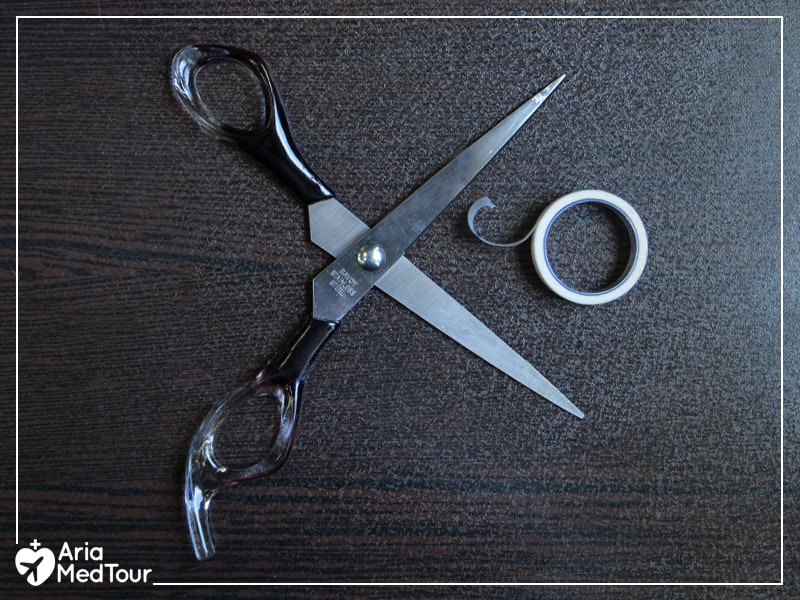
A pair of scissors and a roll of 1/2 inch tape is all you need to tape your nose after a nose job.
Can I shower while I wear tape or splint?
For at least a week after the surgery, it is recommended not to take a shower. If you must, you can wash your hair and body without letting the water run over your face. You can clean your face with a wet washcloth during this period.
Once the splint is removed, you will have to wear tapes that need to stay in place for at least 4-5 days. After this period, showering is an ideal time to remove the tapes every time you want to take them off.
- Read More: Complete rhinoplasty recovery guide
- Further Reading: All About Nose Splints And Why You May Need Them
You May Like to See Before & After Photos of Rhinoplasty
You May Like to See Before & After Photos of Rhinoplasty
How long should I tape my nose?
Generally speaking, you cannot say goodbye to tapes for about 1-3 months. However, this can differ in each case.
If you can tolerate tapes (i.e. interacting with strangers is not what you should do on a daily basis), it’s better if you continue wearing them for at least 3 months.
Yet, it is also recommended to have them off for at least 5-6 hours every day. One month into the surgery, some surgeons suggest taping during the night and having them off during the day.

It’s better to continue wearing tapes for about 3 months after your nose job.
What happens if I don’t tape my nose after rhinoplasty?
The main reason for tapes after nose job is to subside swelling. Although the effectiveness of tapes is not scientifically proved, they are still considered beneficial by most surgeons. It is argued that if you skip taping, the swelling might take longer to go down. Some surgeons also believe that not wearing tapes can increase the risks of some complications such as Polly beak deformity.
- Read More: Dos and don’ts after rhinoplasty
One more question: can I make my nose smaller through taping?
Taping can be effective to subside the swelling and shrink the skin down. It doesn’t, however, affect the shape and form of the nose. If you notice that your nose is shrinking after the surgery, it’s because the swelling is going down.
Share this article:
Related Articles
Feel free to express your opinions or ask your questions regarding the article

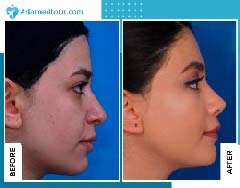

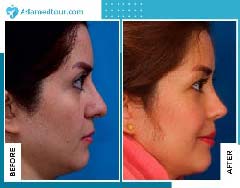

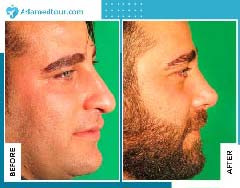


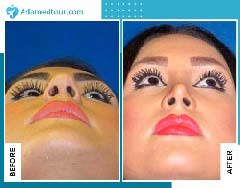

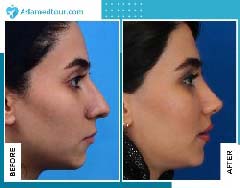




I’m 2 weeks post-op and my surgeon asked me to continue using nose tape at night. Honestly, I still don’t fully understand what does nose tape do. Does it really help reduce swelling, or is it just optional.
Hi Laura! Great question. Using rhinoplasty tape is actually very helpful during the early months of recovery. Nose taping works by applying gentle pressure to the skin and soft tissues, helping control swelling and guide the nasal structure as it heals. So yes — it’s absolutely beneficial, especially when recommended by your surgeon.
I’ve seen lots of videos about nose job tape and nose tape rhinoplasty online, but it’s confusing. Does nose taping work for everyone, or only for certain nose types?
Hi María! The effectiveness of taping nose after rhinoplasty depends on the thickness of your skin and the swelling pattern. For thick-skinned patients, nose tape for shaping can help the nose settle into a more refined form. For thin-skinned patients, taping mostly reduces nighttime swelling. Overall, it plays an important role in recovery—especially in the first several weeks.
Is it normal that my surgeon told me to continue taping nose 6 months after rhinoplasty? I thought taping was only for the first few weeks.
Hi Kevin! For some patients—especially those with thicker skin or noticeable edema—longer taping is completely normal. Many surgeons advise continuing for several months to help support the healing tissues. How long you tape really depends on your individual healing, but your doctor’s guidance is the best indicator.
Patients often ask me how long to tape nose after rhinoplasty, especially when they want faster swelling reduction. I think providing a clear timeline in the article would help them understand what to expect.
Thank you Emily! Most surgeons recommend taping for 1–3 months, depending on swelling and skin type. In some cases, taping may continue longer. Using nose tape consistently is one of the easiest ways to control nighttime swelling and ensure smoother healing.